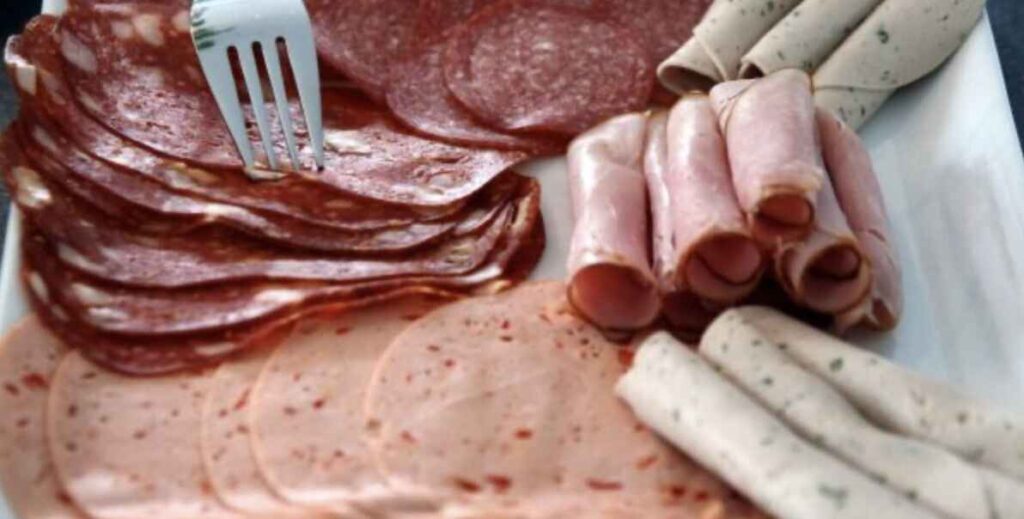Understanding Packaged Smoked Meat
Packaged smoked meat is a popular food item appreciated for its rich flavor, long shelf life, and convenience. The process of smoking meat has been used for centuries as a method of preservation and flavor enhancement, and when combined with modern packaging techniques, it becomes a staple in many households. Here’s an in-depth look at what packaged smoked meat is, how it’s prepared, and why it remains a favorite.
Table of contents
What is Packaged Smoked Meat?
Packaged smoked meat refers to meat products that have undergone a smoking process and are then sealed in air-tight packaging. This ensures freshness, prevents spoilage, and extends the product’s shelf life. It is available in various forms, including slices, chunks, sausages, or whole cuts, and often comes pre-seasoned or ready to eat.
Common examples of packaged smoked meats include:
- Smoked bacon
- Ham
- Turkey or chicken breast
- Sausages like chorizo or kielbasa
- Beef jerky
How is Packaged Smoked Meat Prepared?

The preparation of packaged smoked meat typically involves the following steps:
- Selection of Meat: High-quality cuts of meat are chosen based on the type of product being prepared.
- Curing: Most smoked meats are cured with a mixture of salt, sugar, and spices. This step helps in preserving the meat and enhancing its flavor.
- Smoking: The meat is placed in a smoker or smokehouse, where it is exposed to wood smoke at controlled temperatures. This process imparts the distinctive smoky flavor and creates a protective layer that helps prevent bacterial growth.
- Packaging: After smoking, the meat is vacuum-sealed or packaged using modified atmosphere packaging (MAP) to maintain its freshness and flavor.
Benefits of Packaged Smoked Meat
- Extended Shelf Life: Smoking and vacuum-sealing reduce the risk of spoilage, making it suitable for long-term storage.
- Convenience: Packaged smoked meat is often ready to eat or requires minimal preparation, making it a great option for busy lifestyles.
- Rich Flavor: Smoking imparts a deep, savory flavor that is hard to replicate with other cooking methods.
- Variety: There is a wide range of options, from different types of meat to various seasoning profiles, catering to diverse tastes.
How to Use Packaged Smoked Meat
Packaged smoked meat can be used in a variety of ways, such as:
- Sandwich fillings: Sliced smoked turkey or ham makes for quick and delicious sandwiches.
- Cooking ingredient: Add smoked bacon or sausages to soups, stews, or casseroles for a smoky twist.
- Snacking: Beef jerky or smoked sausages are perfect for on-the-go snacks.
- Entertaining: Serve sliced smoked meats on charcuterie boards alongside cheeses, fruits, and crackers.
Storage Tips for Packaged Smoked Meat
To ensure the best quality and safety, follow these storage guidelines:
- Keep the meat refrigerated at the temperature specified on the packaging.
- Once opened, consume the product within a few days.
- For longer storage, freeze smoked meat in air-tight bags to preserve its flavor and texture.
Preparing Packaged Smoked Meat for Cooking
Smoked meat is a delicious and versatile ingredient that requires proper preparation to ensure optimal flavor and safety. Here’s a step-by-step guide on how to prepare packaged smoked meat before cooking.
1. Inspecting the Packaging
Before handling packaged smoked meat, it’s important to carefully examine the packaging to ensure the product’s quality and safety.
- Check for Damage: Inspect the package for any tears, leaks, or punctures that might compromise the meat’s freshness. Damaged packaging can lead to contamination.
- Look at the Expiry Date: Confirm the “best before” or expiration date to ensure the product is still within its safe consumption window.
- Assess Storage Conditions: Verify that the meat was stored at the proper temperature. Packaged smoked meat should typically be refrigerated or frozen. If you notice any signs of spoilage, such as an unusual smell or discoloration, discard the product immediately.
2. Choosing the Right Tools
Using the correct tools for preparation ensures efficiency and safety in the kitchen.
- Cutting Boards: Use a clean, non-porous cutting board specifically for meat to avoid cross-contamination.
- Sharp Knives: A sharp knife ensures precise cuts and reduces the risk of accidents caused by slipping.
- Thermometer: Consider using a food thermometer later in the cooking process to verify that the meat reaches a safe internal temperature.
- Utensils and Bowls: Prepare clean utensils and bowls to handle and marinate the meat if needed.
3. Thawing Frozen Smoked Meat Correctly
If the smoked meat is frozen, proper thawing is crucial to preserve its quality and ensure safety. Avoid thawing meat at room temperature, as it can promote bacterial growth. Instead, choose one of the following methods:
- Refrigerator Thawing: Place the meat in its original packaging on a plate or tray in the refrigerator. Allow 24 hours for every 4-5 pounds of meat. This is the safest method, maintaining a consistent, safe temperature.
- Cold Water Thawing: If you’re short on time, submerge the sealed package in cold water, changing the water every 30 minutes to keep it cool. Smaller cuts of meat can thaw in 1-3 hours.
- Microwave Thawing: Some microwaves have a defrost setting for meat. Follow the manufacturer’s instructions, but be ready to cook the meat immediately after thawing, as the process can partially cook the edges.
By carefully inspecting the packaging, using the right tools, and thawing frozen smoked meat properly, you’ll set the stage for a delicious and safe cooking experience.
Methods of Cooking Packaged Smoked Meat
1. Boiling Smoked Meat
Boiling is a gentle method that helps retain moisture in smoked meat.
- Submerge the meat in a pot of boiling water.
- Cover and simmer until the meat is heated through, typically 20-30 minutes, depending on the thickness.
- For extra flavor, add herbs, spices, or broth to the boiling water.
2. Pan-Frying Smoked Meat
Pan-frying creates a crisp exterior while preserving the smoky flavor.
- Heat a non-stick or cast-iron skillet over medium heat.
- Add a small amount of oil or butter to prevent sticking.
- Cook the meat for 2-4 minutes on each side, or until it develops a golden-brown crust.
3. Baking Smoked Meat
Baking is ideal for larger cuts like ham or brisket.
- Preheat the oven to 325°F (165°C).
- Place the meat in a baking dish, optionally adding a glaze or marinade.
- Cover with foil to prevent drying, and bake until the internal temperature reaches the recommended level.
4. Grilling Smoked Meat
Grilling enhances the smoky flavor with a charred touch.
- Preheat the grill to medium heat.
- Brush the meat with oil or a glaze to prevent sticking.
- Grill for 5-10 minutes per side, depending on the cut, ensuring even cooking.
Best Practices for Flavor Enhancement

1. Using Marinades and Rubs
- Marinades: Soak the meat in a mixture of oil, acid (vinegar or citrus), and seasonings to enhance flavor and tenderness.
- Rubs: Apply a dry spice mix for a bold flavor crust during cooking.
2. Pairing with Sauces
- Complement smoked meat with barbecue, mustard, or sweet chili sauce.
- Glaze with honey or maple syrup for a caramelized finish.
3. Adding Fresh Herbs and Spices
- Sprinkle fresh herbs like rosemary, thyme, or parsley before serving.
- Add garlic, paprika, or black pepper for depth of flavor.
Cooking Tips for Specific Types of Smoked Meat
1. Cooking Smoked Brisket
- Slow-cook brisket at a low temperature (225°F/107°C) for 8-10 hours.
- Wrap in foil to retain moisture.
2. Preparing Smoked Ham
- Bake ham with a glaze of honey and mustard for added sweetness.
- Use a thermometer to ensure the internal temperature reaches 140°F (60°C).
3. Heating Smoked Sausages
- Grill or pan-fry sausages over medium heat for 5-7 minutes until heated evenly.
4. Cooking Smoked Turkey
- Roast in the oven at 325°F (165°C) for 10-12 minutes per pound.
- Cover with foil to prevent dryness.
Safety Tips When Cooking Packaged Smoked Meat
1. Avoiding Cross-Contamination
- Use separate cutting boards and utensils for raw and cooked meat.
2. Monitoring Cooking Temperatures
- Use a meat thermometer to ensure meat reaches safe internal temperatures (e.g., 165°F/74°C for poultry).
3. Proper Storage of Leftovers
- Refrigerate leftovers within 2 hours of cooking to prevent bacterial growth.
Recipes Using Packaged Smoked Meat
1. Smoked Meat Sandwiches
- Layer smoked meat on fresh bread with cheese, pickles, and mustard.
2. Smoked Meat Pasta
- Toss diced smoked meat with creamy pasta and fresh herbs.
3. Smoked Meat Salads
- Add sliced smoked meat to a bed of greens, cherry tomatoes, and vinaigrette.
4. Smoked Meat Casseroles
- Combine smoked meat with potatoes, cheese, and cream, then bake until golden.
Pairing Suggestions for Smoked Meat Dishes
1. Ideal Side Dishes
- Serve smoked meat with mashed potatoes, coleslaw, or cornbread.
2. Perfect Beverage Pairings
- Pair with red wine, craft beer, or smoky whiskey.
- For non-alcoholic options, try iced tea or lemonade.
Common Mistakes to Avoid When Cooking Smoked Meat
1. Overcooking or Undercooking
- Always use a meat thermometer to ensure precise cooking.
2. Not Resting the Meat
- Let the meat rest for 5-10 minutes after cooking to allow juices to redistribute.
3. Forgetting to Season Properly
- Season meat adequately before cooking for the best flavor.
Reheating Packaged Smoked Meat
1. Microwave Reheating Tips
- Use medium power to avoid drying out the meat, and cover with a damp paper towel.
2. Oven Reheating Techniques
- Place meat in a baking dish, cover with foil, and heat at 300°F (150°C) until warmed through.
3. Stovetop Reheating Methods
- Heat gently in a skillet with a small amount of broth or water to keep it moist.
Health Considerations with Smoked Meat
1. Sodium Content Awareness
- Smoked meat can be high in sodium. Opt for low-sodium options if available.
2. Allergens in Packaged Smoked Meat
- Check the label for allergens like soy or gluten.
3. Tips for Balanced Consumption
- Enjoy smoked meat in moderation as part of a balanced diet.
How to Store Cooked Smoked Meat
1. Refrigeration Guidelines
- Store cooked meat in an airtight container in the refrigerator for up to 3-4 days.
2. Freezing Cooked Smoked Meat
- Wrap tightly in foil or plastic wrap and store in a freezer-safe bag.
3. Avoiding Freezer Burn
- Remove as much air as possible before freezing to prevent freezer burn.
Frequently Asked Questions
1. How long does it take to cook packaged smoked meat?
- Cooking time depends on the cut and method but ranges from 10 minutes to several hours.
2. Do you need to soak smoked meat before cooking?
- Not always, but soaking can reduce saltiness in some types of smoked meat.
3. Can you eat smoked meat cold?
- Yes, as long as it’s fully cooked and safe to consume.
4. What’s the best seasoning for smoked meat?
- Popular options include garlic powder, paprika, and cayenne pepper.
5. How do you know when smoked meat is done?
- Use a thermometer to ensure the meat reaches the correct internal temperature.
6. What’s the shelf life of packaged smoked meat?
- Typically 1-2 weeks in the refrigerator or several months in the freezer.
For additional and techniques, refer to this guide on how to cook NY Strip Steak perfectly every time. Explore also this tools and techniques for enhancing smoked meat flavors, and guide on perfect pairings for smoked meat.
Final Thoughts on Cooking Packaged Smoked Meat
Cooking packaged smoked meat is both simple and rewarding. By following these tips, you can unlock its full flavor potential and create mouthwatering dishes. Don’t be afraid to experiment with recipes, marinades, and pairings to make every meal a delightful experience!

